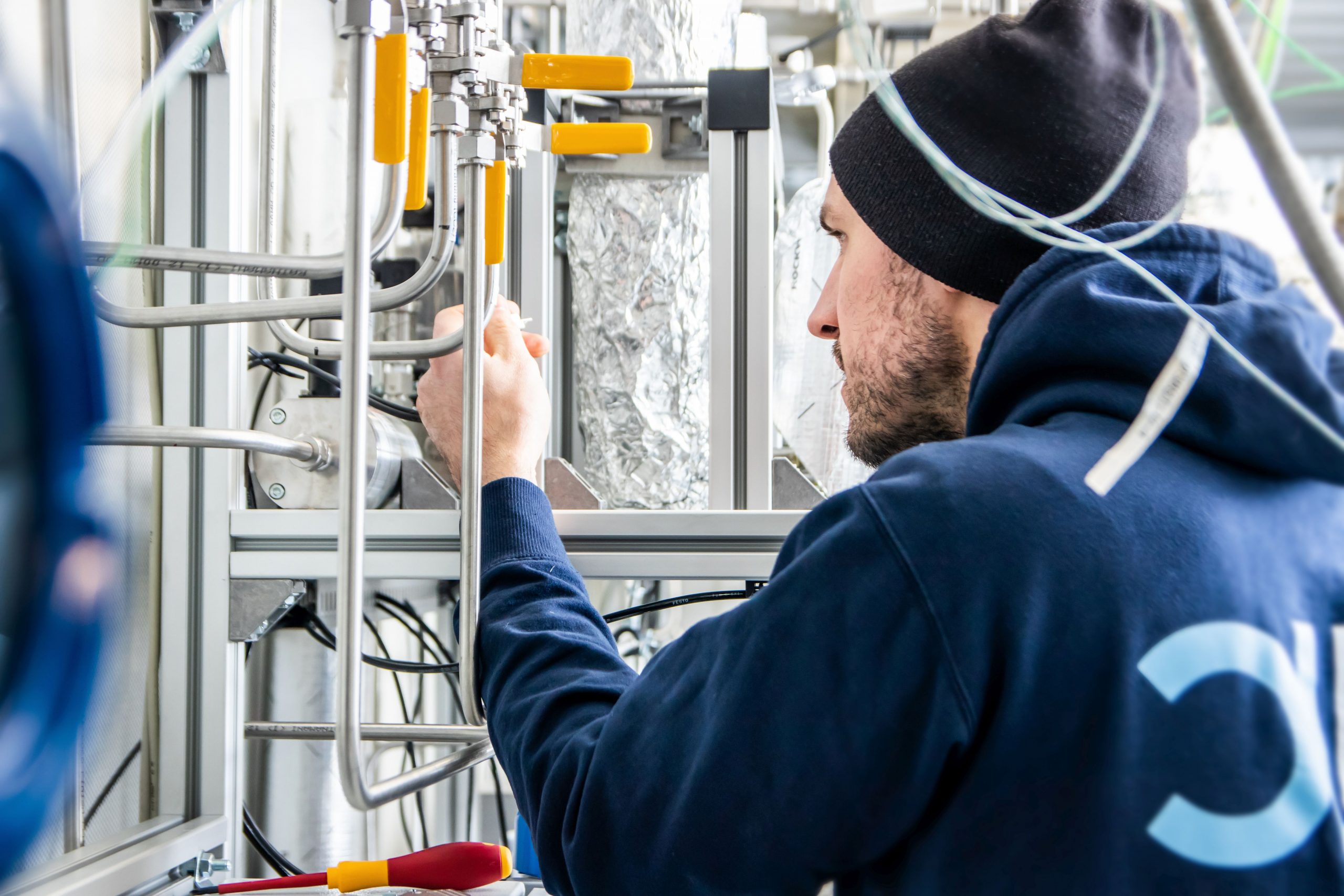
The Karlsruhe Institute of Technology (KIT) in Germany is building a globally unique experimental plant that converts CO2 (carbon dioxide) from the atmospheric air into a pure and industrially applicable carbon dioxide: carbon black.
Global warming has to be limited to well below 2 degrees Celsius by the end of the century. Governments around the world have committed themselves to this in the 2015 Paris Climate Accord. In order to achieve this goal, it is not only necessary to reduce greenhouse gas emissions, but also to remove any CO2 already emitted from the atmosphere. Technical solutions still need to be found.
In the KIT test facility, the goal is to remove the harmful greenhouse gas CO2 from the surrounding air and turn it into carbon black, a raw material used in high-tech applications. The powdery, ultra-pure carbon black can be used in the electronics, printing and construction industries. Research partners are Ineratec GmbHH, a spin-off of KIT, and Climeworks, a spin-off of ETH Zurich.
Post-fossil raw material
The approach differs from earlier concepts for the reduction of atmospheric CO2. For example, the methods for carbon capture and storage (CCS) only involve the storage of CO2 in deep stone repositories. Compared to transient CO2, managing solid carbon is less complex, explains project coordinator Benjamin Dietrich from the Institute of Thermal Process Engineering (TVT) at KIT. It is also useful as a raw material. Until now, carbon black was mainly produced from fossil oils. Which is why Dietrich refers to it as a post-fossil raw material supply.
KIT’s experimental plant will combine several process steps. These have already been developed and researched on a laboratory scale. They will now be realized in an integrated plant for the first time ever. The success of the experiment will largely depend on the integration of the process modules and on the control process.
From CO2 to carbon black
First, CO2 is filtered from the surrounding air. This is done using the Direct-Air-Capture (DAC) process and using an adsorber. The next step takes place in a microstructured reactor. This is where the CO2 is combined with renewable hydrogen and converted into methane and water. The methane that is produced is fed into a bubble reactor filled with liquid tin and serves as a carbon carrier in the ensuing process. At this point, the rising methane bubbles cause a pyrolysis reaction and the methane is broken down into its components:
- hydrogen, which is directly fed back into the methanation process;
- solid carbon in the form of microgranular powder, carbon black.
The plant will be built on the KIT site. Several expansion phases are being planned in order to increase the capacity per container and to observe the parallel operation of the various installations.
You can read more IO articles about CO2 here.
